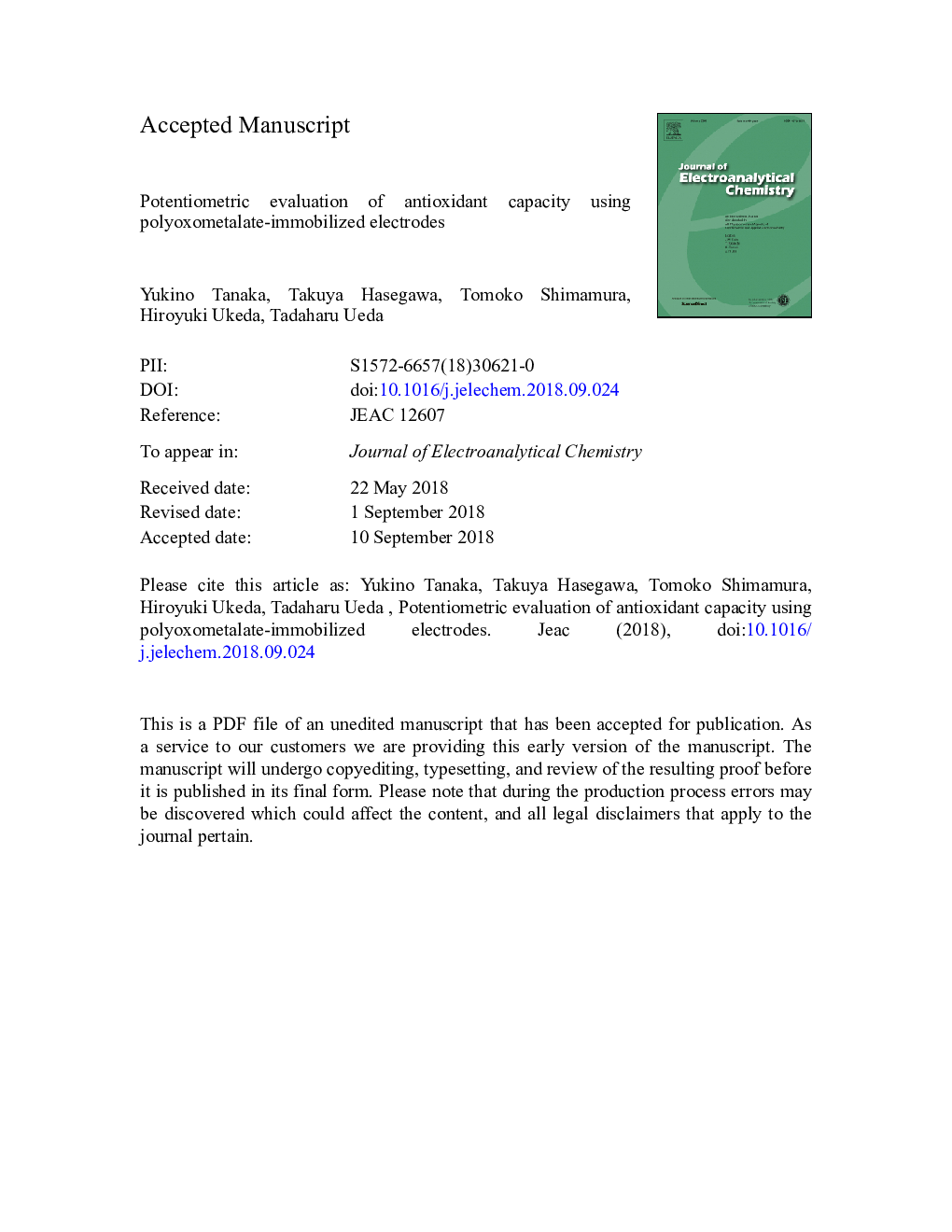| Article ID | Journal | Published Year | Pages | File Type |
|---|---|---|---|---|
| 10225199 | Journal of Electroanalytical Chemistry | 2018 | 22 Pages |
Abstract
The voltammetric behaviour of polyoxometalates (POMs) is greatly affected by acid and solvent conditions. POMs can be immobilized on an electrode surface by various cationic conducting polymers prepared via in situ electro-oxidative polymerization. In the present study, the effects of acid and organic solvent concentrations on POM immobilization on the surface of a glassy carbon electrode (GCE) were investigated with cyclic voltammetry. Several Keggin-type POMs, such as [PMo12O40]3â, [PVMo11O40]4â, [PVW11O40]4â and [SVMo11O40]3â, were examined with three types of conducting polymers, polypyrrole (PPy), poly(3,4âethylenedioxythiophene) (PEDOT) and polyaniline (PAni). In addition, the voltammetric behaviour of the POM-immobilized electrodes was investigated under various conditions. Finally, the most appropriate POM-immobilized electrode was selected as a redox probe to potentiometrically evaluate antioxidant activity. The antioxidant activities of several typical antioxidants contained in food and beverages were evaluated using an appropriate PMo12O40-immobilized electrode under the optimized conditions, and the results were compared with those obtained from two well-known spectroscopic methods: the oxygen radical absorbance capacity (ORAC) and 2,2âdiphenylâ1âpicrylhydrazyl (DPPH) radical assays.
Related Topics
Physical Sciences and Engineering
Chemical Engineering
Chemical Engineering (General)
Authors
Yukino Tanaka, Takuya Hasegawa, Tomoko Shimamura, Hiroyuki Ukeda, Tadaharu Ueda,
